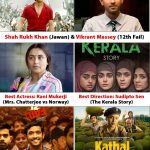Nestled within the majestic Himalayan ranges, Kashmir is often referred to as paradise on Earth. Beyond its breathtaking beauty lies a deeper essence—the soul of a region shaped by its unique cultural heritage. A confluence of faiths, philosophies, and artistic traditions, Kashmir has long stood as a testament to human resilience, creativity, and the unyielding spirit of a people rooted in their identity. However, this identity has not remained untouched by the ravages of time, political turmoil, and social upheavals.
Today, Kashmir’s struggle for its cultural and spiritual identity is as much about survival as it is about preserving its intrinsic character. This journey into the heart of Kashmir’s heritage unveils a tapestry of history, language, art, music, spirituality, and architectural brilliance that underscores the region’s profound legacy.
Kashmir’s identity has always been defined by its pluralistic ethos. For centuries, the valley was a cradle of syncretism—a melting pot of religious and cultural practices that coexisted harmoniously. Hinduism, Buddhism, and Islam have each left an indelible mark on the region’s spiritual landscape.
In ancient times, Kashmir was a prominent center for Shaivism, particularly Kashmiri Shaivism; a philosophy that celebrated the interconnectedness of the universe. The Spanda (vibrational energy) doctrine and Pratyabhijna (recognition of divine consciousness) formed the spiritual backbone of the valley. These teachings emphasized inner realization and universal harmony, values that resonated with the region’s peaceful ethos.
With the advent of Islam in the 14th century, Sufi mysticism blended seamlessly with local traditions, giving rise to the Rishi-Sufi movement. Saints like Sheikh Noor-ud-din Noorani (commonly known as Nund Rishi) preached values of simplicity, love, and compassion, building bridges between Hindu and Muslim communities. Similarly, Lal Ded’s mystical poetry transcended religious divides, speaking directly to the human soul’s yearning for unity with the divine.
These philosophies laid the foundation of Kashmiriyat—a cultural ethos rooted in shared humanity and tolerance. Yet, the political and social upheavals of recent centuries have strained this harmony, threatening to erode the core of Kashmir’s identity.
Language is one of the most potent carriers of cultural identity, and for Kashmir, the Kashmiri language (Koshur) is an integral part of its heritage. A member of the Dardic group of languages, Kashmiri has evolved over centuries, absorbing influences from Sanskrit, Persian, and Arabic. The Vakhs of Lal Ded and the Shruks of Nund Rishi are profound examples of Kashmiri literature, reflecting both the philosophical and emotional depth of the language.
However, Kashmiri today faces an existential crisis. Rapid globalization, migration, and shifts in educational priorities have relegated the language to the fringes, particularly among younger generations. The dominance of Urdu and English in education and administration has further marginalized Kashmiri.
Efforts to revive the language have gained momentum in recent years. Literature festivals, Kashmiri poetry recitals, and the inclusion of Kashmiri in school curriculums are essential steps in reclaiming linguistic pride. Without these efforts, the loss of Kashmiri as a living language would be a devastating blow to the region’s cultural identity.
Kashmiri art and craft have long been celebrated for their intricate beauty and unparalleled craftsmanship. Each piece of Pashmina shawl, every papier-mâché ornament, and the finest hand-knotted carpets are not just commodities—they are expressions of centuries-old traditions passed down through generations.
The delicate process of creating Pashmina shawls, for instance, is a testament to the patience and skill of Kashmiri artisans. From the spinning of fine threads to the weaving of exquisite patterns, each step reflects a legacy of excellence. Similarly, papier-mâché, introduced to the valley by Persian artisans, tells stories of nature and mythology through its vibrant designs.
However, industrialization, political instability, and economic challenges have threatened these crafts. Artisans often struggle to sustain their livelihoods, and traditional skills are at risk of being lost forever. Reviving these crafts requires targeted efforts to support artisans, promote fair trade, and foster global appreciation for the artistry of Kashmir.
Music and dance are integral to Kashmir’s cultural expression. The soulful tunes of the Rabab, Santoor, and Tumbakhnari create a musical landscape that resonates with the natural beauty of the valley. Traditional songs like “Rouf” and “Wanvun” are woven into the fabric of Kashmiri weddings and celebrations, bringing people together in joy and harmony.
The fusion of Persian and Central Asian influences with local traditions gave Kashmiri music its distinctive identity. The Sufiana Mausiqi tradition, deeply spiritual in nature, is an eloquent expression of devotion and mysticism.
Yet, the modern era poses challenges to these art forms. Popular culture and the dominance of Bollywood music have overshadowed traditional Kashmiri melodies. Cultural organizations, music academies, and individual artists are working tirelessly to revive these traditions, ensuring that the sounds of the valley continue to echo across generations.
Kashmir’s architectural heritage is a visual narrative of its history and cultural evolution. The ancient temples of Martand and Awantipora, built during the Hindu dynasties, showcase the grandeur of early Kashmiri architecture. These structures, with their unique blend of Indian and Central Asian styles, stand as monuments to the valley’s rich past.
The Islamic era brought new architectural influences, evident in the mosques and shrines that dot the landscape. The Jamia Masjid in Srinagar, with its grand wooden structure and Indo-Saracenic design, and the Khanqah-e-Moula, a shrine dedicated to Mir Sayyid Ali Hamadani (RA), are masterpieces of Kashmiri architecture.
Despite their historical significance, these structures face threats from natural decay, urbanization, and neglect. Restoration efforts are crucial not just to preserve these monuments but to maintain a tangible connection to Kashmir’s cultural roots.
The challenges to Kashmir’s cultural heritage are manifold. Decades of political turmoil have taken a heavy toll on the region’s social fabric. The displacement of the Kashmiri Pandit community in the 1990s led to a cultural void, as traditions that thrived in the valley were scattered across the globe.
Additionally, the pressures of modernization and globalization have altered lifestyles and priorities, often at the cost of cultural continuity. Young generations, exposed to global media and technology, may find it difficult to relate to traditional practices and values. This disconnect poses a significant threat to the preservation of Kashmir’s identity.
The commercialization of culture is another concern. While tourism brings economic benefits, it can reduce cultural heritage to a mere spectacle, stripping it of authenticity and meaning. Balancing economic development with cultural preservation is a delicate task that requires collaborative efforts.
Despite these challenges, the spirit of Kashmir remains unbroken. Efforts to revive and sustain its cultural heritage are gaining traction. Local organizations, artists, and writers are at the forefront of this movement, using literature, art, and digital platforms to keep Kashmir’s traditions alive.
Education is a powerful tool in this endeavor. By incorporating Kashmiri history, language, and art into school curriculums, future generations can develop a sense of pride in their heritage. Cultural festivals, seminars, and workshops provide platforms for sharing and celebrating traditions.
Technology, too, offers new opportunities. Social media and digital storytelling have made it possible to connect Kashmiri voices with global audiences, fostering a renewed interest in the region’s rich legacy.
Kashmir’s struggle for identity is not merely a regional issue—it is a universal story of resilience and the fight to preserve cultural diversity. The valley’s heritage is a reminder of the power of art, language, and spirituality to transcend boundaries and connect humanity.
As Mehjoor, the celebrated poet of Kashmir, once wrote:
“I will make this desolate garden bloom again,
With songs of hope and flowers of love.”
Kashmir’s identity is a garden waiting to blossom anew. With collective effort and a deep respect for its heritage, the valley can reclaim its rightful place as a beacon of culture and humanity. By preserving its past, we can inspire a future where Kashmir’s spirit continues to shine brightly for generations to come.
(Author is a columnist and can be reached at: [email protected])










